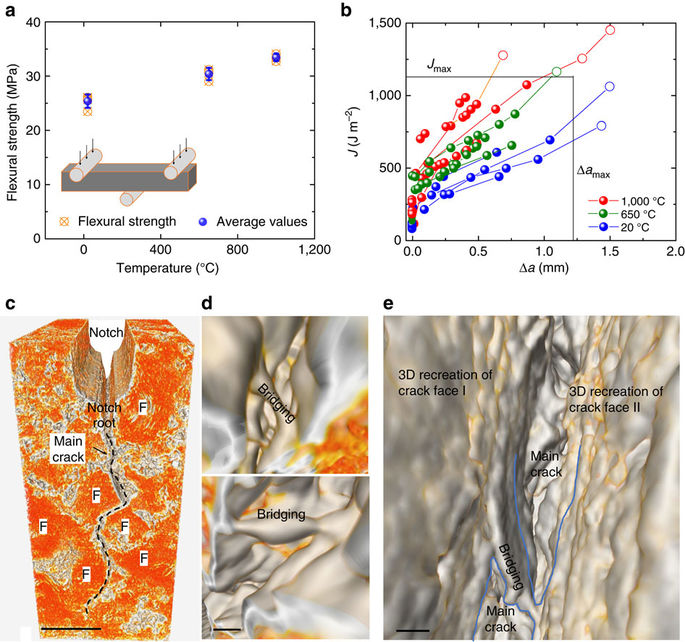当前位置:
X-MOL 学术
›
Nat. Commun.
›
论文详情
Our official English website, www.x-mol.net, welcomes your
feedback! (Note: you will need to create a separate account there.)
Damage tolerance of nuclear graphite at elevated temperatures.
Nature Communications ( IF 14.7 ) Pub Date : 2017-06-30 , DOI: 10.1038/ncomms15942 Dong Liu , Bernd Gludovatz , Harold S. Barnard , Martin Kuball , Robert O. Ritchie
Nature Communications ( IF 14.7 ) Pub Date : 2017-06-30 , DOI: 10.1038/ncomms15942 Dong Liu , Bernd Gludovatz , Harold S. Barnard , Martin Kuball , Robert O. Ritchie

|
Nuclear-grade graphite is a critically important high-temperature structural material for current and potentially next generation of fission reactors worldwide. It is imperative to understand its damage-tolerant behaviour and to discern the mechanisms of damage evolution under in-service conditions. Here we perform in situ mechanical testing with synchrotron X-ray computed micro-tomography at temperatures between ambient and 1,000 °C on a nuclear-grade Gilsocarbon graphite. We find that both the strength and fracture toughness of this graphite are improved at elevated temperature. Whereas this behaviour is consistent with observations of the closure of microcracks formed parallel to the covalent-sp2-bonded graphene layers at higher temperatures, which accommodate the more than tenfold larger thermal expansion perpendicular to these layers, we attribute the elevation in strength and toughness primarily to changes in the residual stress state at 800-1,000 °C, specifically to the reduction in significant levels of residual tensile stresses in the graphite that are 'frozen-in' following processing.
中文翻译:

高温下核石墨的损伤容限。
核级石墨是全球当前和潜在的下一代裂变反应堆的至关重要的高温结构材料。必须了解它的容忍行为,并在使用条件下辨别损害演变的机制。在这里,我们在核级Gilsocarbon石墨上,在环境温度和1,000°C之间的温度下,用同步加速器X射线计算机断层扫描进行原位机械测试。我们发现,在高温下,这种石墨的强度和断裂韧性均得到改善。而此行为与平行于共价sp 2形成的微裂纹闭合的观察结果一致石墨烯层在较高的温度下可容纳垂直于这些层的十倍以上的热膨胀,因此我们将强度和韧性的提高主要归因于800-1,000°C下残余应力状态的变化,特别是由于降低了加工后“冻结”在石墨中的残余拉应力的水平很高。
更新日期:2017-07-01
中文翻译:

高温下核石墨的损伤容限。
核级石墨是全球当前和潜在的下一代裂变反应堆的至关重要的高温结构材料。必须了解它的容忍行为,并在使用条件下辨别损害演变的机制。在这里,我们在核级Gilsocarbon石墨上,在环境温度和1,000°C之间的温度下,用同步加速器X射线计算机断层扫描进行原位机械测试。我们发现,在高温下,这种石墨的强度和断裂韧性均得到改善。而此行为与平行于共价sp 2形成的微裂纹闭合的观察结果一致石墨烯层在较高的温度下可容纳垂直于这些层的十倍以上的热膨胀,因此我们将强度和韧性的提高主要归因于800-1,000°C下残余应力状态的变化,特别是由于降低了加工后“冻结”在石墨中的残余拉应力的水平很高。













































 京公网安备 11010802027423号
京公网安备 11010802027423号